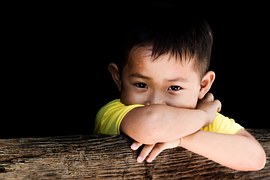Understanding Child Development
Posted by Patricia on Apr 6th 2018
Understanding Child Development – Understanding children can be aided by looking at their brains as well as their bodies. A child’s brain is not formed overnight. It begins developing before birth and continues to do so for many years, although the development in the first several years is more concentrated. Brain development establishes the foundation for the health, learning, and behavior that follow. During the first few years following birth there is a very rapid growth in the number of neural connections made. These connections are then later reduced in a natural pruning process that removes those not used to make room for and allow more efficient operation of those remaining.
The genes a child is born with do not alone determine developmental outcomes. Supportive environments with rich learning experiences activate positive genetic potential which can include such varied items as a well-functioning immune system or a capacity for goal-directed behavior. Highly stressful experiences in early development can negatively impact the ability to manage responses to adversity later in life.

Brain Development of a Child
Children develop within an environment of relationships. These certainly begin in the family, but also include other adults that play important roles in their lives. The other adults most commonly involved include extended family, caregivers, teachers, nurses, social workers, coaches, and neighbors. The adults who care for them can fuel the development process in the children. Young children naturally reach out through facial expression, gestures, and words, while the adults who care for them respond in a similar way. The responsive interaction with adults helps to build neural connections in the developing child’s brain. Without this the child’s brain may be weakened, negatively impacting later learning, behavior, and health.
Skills in brains are built similarly to electrical circuits with more increasingly complex circuits being built upon simpler ones. This results in more complex and adaptive skills emerging over time. Higher level skills and the ability to retain new information are made possible by the development of the prefrontal cortex of the brain during early childhood.
Significant Stress Effects a Child’s Development
Significant stress during a child’s development will likely result in negative effects on learning, behavior, and health. The human body when threatened, responds by increasing heart rate, blood pressure, and blood sugar. These changes are brought about by the body’s secretion of stress hormones such as adrenaline and cortisol. However, continuous activation of this system will cause wear and tear on these critical biological functions.
A healthy child’s development will include learning how to cope with adversity and difficult situations. While in the environment of a supportive adult, the physiological effects can be either blocked or restored to normal quickly. This allows for the development of a well-functioning stress response system. Without this adult support, the child can learn to fear rapidly, shift into a defensive mode, react strongly when not needed, or shut down completely. This may have negative repercussions across the child’s lifespan.
A Child Exposed to Prolonged Adversity
Any child that is exposed to prolonged adversity is at greater risk for physical and mental health problems. Earlier and longer-lasting stresses are likely to incur greater risks. Neglect due to the absence of responsive care, causes a child’s brain to not develop strong brain architecture. Additionally, the absence of expected and essential responsive relationships presents a serious threat to the child’s well-being during the early years and can have lifelong consequences.
Unlike overt physical abuse, deprivation, neglect, and emotional abuse can cause more harm to a young child’s development. Severe neglect has been found to have a negative impact in the areas of emotion, stress regulation, attention, and self-control. It is believed that providing the right conditions for healthy development from the start produces better results than trying to fix problems later.
Stable Relationships Surrounding a Child
Research shows that the children who end up doing well are most often those who have had at least one stable and responsive relationship with an adult. These relationships add support and protection to the children’s lives that protect them from disruptions and build key capabilities that enable them to respond to adversity and thrive. Resilience is developed when there are positive experiences developed to offset the effects of adversity. It is necessary to help adults develop the core capabilities that will lead to success as parents as well as the development of the same capabilities in their children.
I cannot thank you enough,
Hope for Children Foundation Board of Directors

